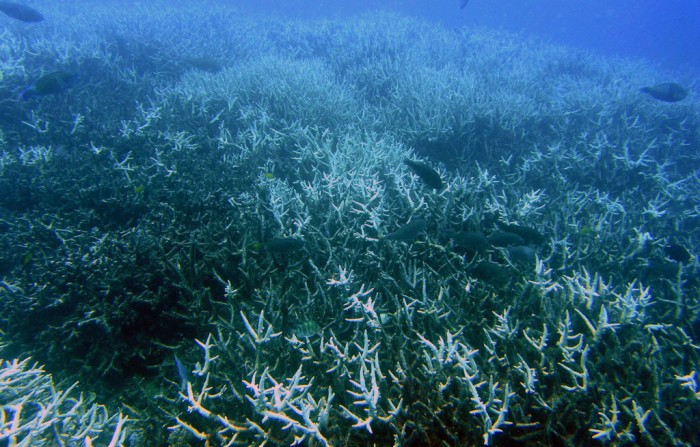The Race to Save Coral Reefs
Battered by rising ocean temperatures and this year’s powerful El Niño, many of the world’s coral reefs are slowly dying. Scientists have found that Australia’s Great Barrier Reef is experiencing the worst coral bleaching event they’ve ever seen (bleaching happens when warm water temperatures cause the corals to expel the symbiotic algae that supply the reef with oxygen and nutrients). As a result, the focus of marine biologists has moved from protecting existing reefs to finding ways to restore and rebuild them.
A paper published in Environmental Science and Technology proposes a novel and low-tech method for helping coral survive: blowing bubbles through seawater. This simple technique, say the authors, could remove carbon dioxide from coastal waters and reduce ocean acidification—not the primary cause of coral death but a factor in weakening them.

Other scientists, such as Ken Nedimyer, founder of the Coral Restoration Foundation, are painstakingly growing coral in nurseries made up of PVC trees and transplanting them to the wild. A joint research project by the Australian Institute of Marine Sciences and the University of Hawaii, supported by Paul Allen’s Ocean Challenge foundation, is looking at whether we can hasten the evolution of more resilient corals. Similarly, Steve Palumbi of Stanford’s Hopkins Marine Station is studying certain types of coral that seem to be more resistant to higher temperatures than others, to see if those qualities can be selectively bred.
Many of these efforts are essentially geoengineering, and whether they can be scaled up to preserve a significant portion of the endangered reefs remains to be seen. Corals are vital parts of the ocean ecosystem, which means humans rely on them too: 17 percent of the protein in humans’ diets comes from fish, according to the U.N. Food and Agriculture Organization. So any effort to save the reefs before it’s too late is worthy of support.
(Read more: "Coral Reefs Are in Trouble. Meet the People Trying to Rebuild Them.")
Keep Reading
Most Popular
Large language models can do jaw-dropping things. But nobody knows exactly why.
And that's a problem. Figuring it out is one of the biggest scientific puzzles of our time and a crucial step towards controlling more powerful future models.
How scientists traced a mysterious covid case back to six toilets
When wastewater surveillance turns into a hunt for a single infected individual, the ethics get tricky.
The problem with plug-in hybrids? Their drivers.
Plug-in hybrids are often sold as a transition to EVs, but new data from Europe shows we’re still underestimating the emissions they produce.
Stay connected
Get the latest updates from
MIT Technology Review
Discover special offers, top stories, upcoming events, and more.